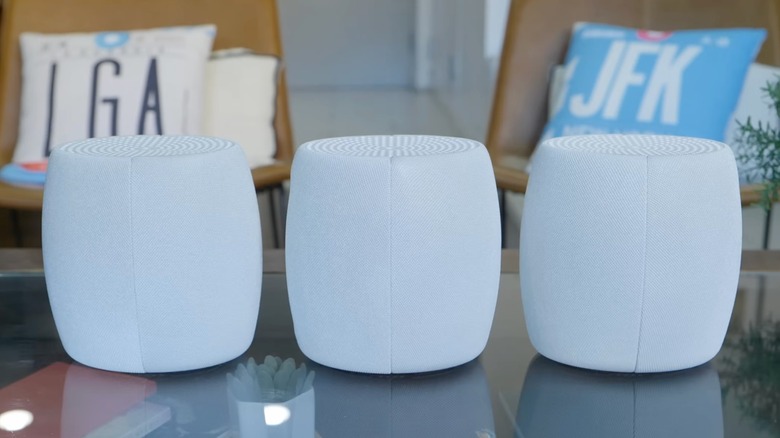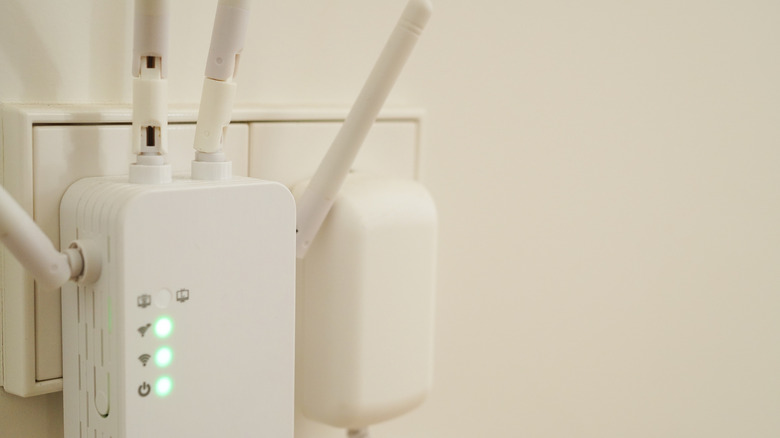How To Get Stronger Wi-Fi At Home Without An Ethernet Cord
Most of our appliances and items heavily rely on the internet. Unfortunately, connection issues are common, resulting in many homes having a weak Wi-Fi signal. There are many reasons why your internet connection may be slow, including excessive network usage, old equipment, weak network security, distance from the router, physical barriers (such as walls, doors, floors, and furniture), and interference from nearby appliances and devices. Therefore, many users opt for an Ethernet cable to transmit the best possible signal, especially when engaging in activities that require high bandwidth, such as gaming, video streaming, large file transfers, online backups, and video calling. But what do you do when you don't have an extra cord or don't like the endless amounts of tangled cables running through your home that keep you in one location? While you can always try low-cost approaches like using an aluminum foil hack to boost a weak Wi-Fi signal, the better solution is to upgrade your equipment. That's where you create a mesh network or install Wi-Fi extenders to achieve a strong signal at home without the need for an Ethernet cord.
While they are great contenders, you don't need both in your home to boost the internet. Instead, it's best to know what fits better for your needs. First, consider your budget. Mesh systems are more costly, ranging from approximately $100 to over $1,500, while most extenders fall around $100. Next, look at the size of your home. Mesh versions are suitable for larger homes and extenders for smaller ones. Then, if you want an easier installation process, go for Wi-Fi boosters over a mesh network.
Create a mesh network system in your home
A mistake everyone makes when buying a Wi-Fi router is not considering mesh networks, especially since they can significantly enhance your signal. In simple terms, each device, also known as a satellite node, takes the signal power from the router and sends it to the next, creating a wide blanket that covers the dead spots in your home. When you go into a room and use a device, the system will pick up the signal, ensuring the room has optimal coverage. Setup involves three steps: discovering the dead zones in your home, strategically setting up the nodes in those areas, and activating the system through an app on your smart device. Since installation can be a little more complex and time-consuming, you may want to hire a professional team to ensure it is positioned correctly and in working order.
Once it is up and running, expect reliable connections unobstructed by physical barriers like walls or floors. These systems typically have incredible speed, though they only reach the maximum speed your internet can go. If you experience lags and buffering, it may be time to contact your internet provider for a higher speed.
Add Wi-Fi extenders in your home
Need a less complex and budget-friendly option? Look no further than a Wi-Fi extender, which can easily be plugged into any standard outlet. This helpful tool fills in the dead spots of your home by rebroadcasting the Wi-Fi signals in those pesky areas. Since extenders typically create a second network, though, your signal may drop as you move around the home, making you have to reconnect to either the booster or the router. One of the most important factors to consider is finding the right location, placing it close enough to the router to get a strong signal but far enough away to fill in those zones. Typically, higher areas, like a shelf or mounting on the wall, will cover a wider area.
There are two kinds of extenders, wired and wireless, with many people preferring the wireless version. However, be aware that you don't always need to go out of your way to purchase one. There is a clever way you could make use of your old Wi-Fi router by turning it into a wired extender: Reboot the device, connect it to your Ethernet port, and enable repeater mode.
Sometimes, these devices are a bit more tech-laden than some of us can manage; therefore, the next step may be to reach out to a professional installation team or your internet company to ask about getting some extenders. But remember that these might become an additional cost to your monthly bill. If you purchase an option outside of your internet provider, a professional team can ensure that it is appropriately in place to maximize overall performance.


